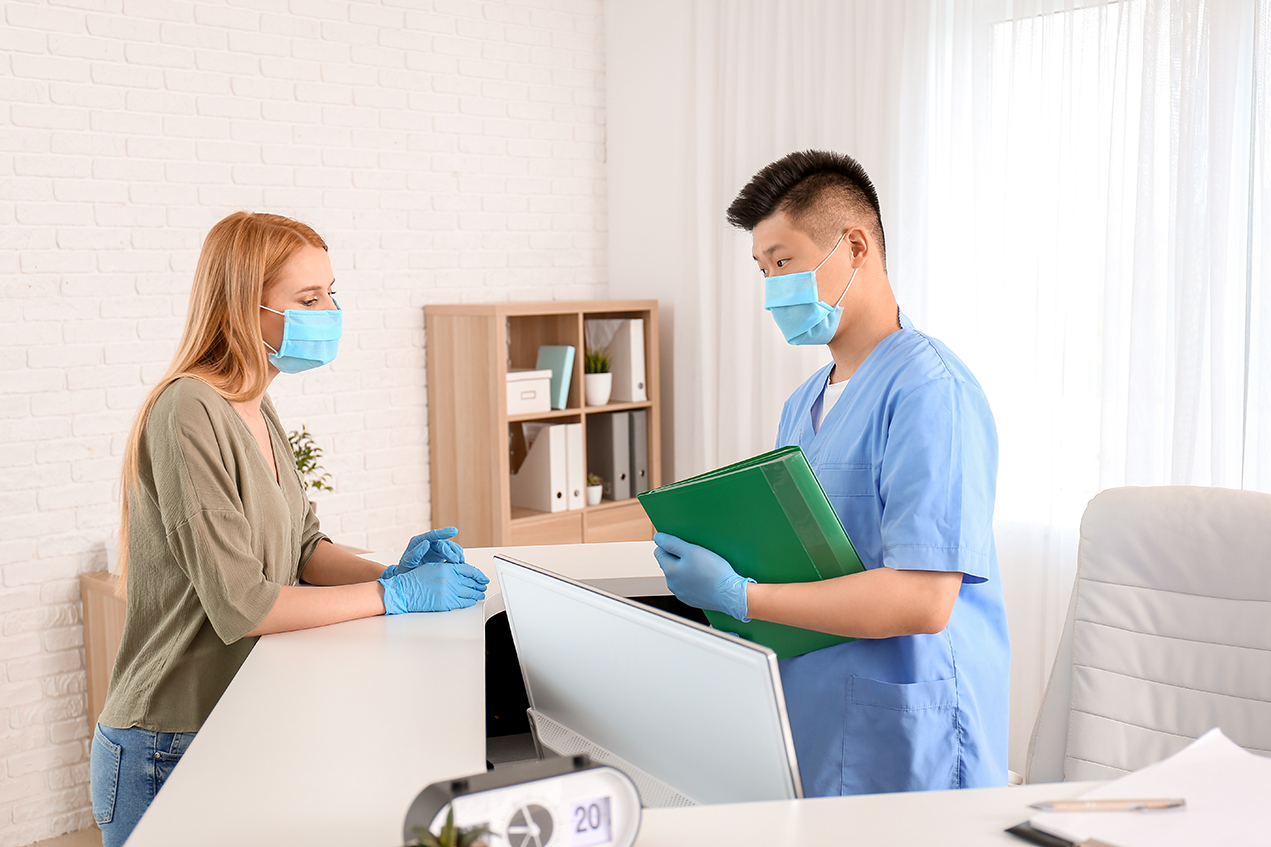Before the COVID-19 pandemic, surgical coordinators would typically help patients understand how to navigate the processes leading up to their procedure, including medical records, imaging, insurance, preoperative appointments and tests. Now that business is resuming at Keck Medicine of USC, the support these coordinators provide has extended to assuring patients of their safety, as well as making them fully aware of the health system’s new infection prevention protocols.
Ashley Valentino, an office supervisor for the division of cardiac surgery for Keck Medicine, is one of several surgical coordinators who guide patients through what could otherwise be a complicated and anxiety-inducing process.
“We stepped up our game, because we want to make sure our patients know they’re safe,” said Valentino. “What helped us the most was the fact that leadership was on the ball. They wanted to make sure staffers and patients are protected, so they worked quickly to figure out how to rotate staff through the office and have some people working from home. That was a huge help in transitioning to the new normal.”
This new normal does a great deal to ensure patient and staff safety, but it also comes with some noteworthy changes. All of Keck Medicine’s surgical divisions have adopted telehealth to help minimize the number of people who have to come in for visits. That, in turn, has added another layer of responsibility for the coordinators.
Hepatobiliary and pancreatic surgery support coordinator Gunther Schulz explained: “For some patients, the technology is difficult, and they don’t like dealing with it. Normally, we would go out of our way to mail things or avoid electronic communication for those people. Now it’s more important for patients to have telehealth as an option. I’m here to walk them through that. I can help them with downloading the app and getting comfortable with it.”
When patients do need an in-person visit, coordinators help them understand the new safety procedures.
“We’ve changed the entire admissions process,” said Jason Garcia, a support coordinator for the division of vascular surgery. “We make sure there is plenty of time between appointments, so people are better able to keep a distance and they’re still comfortable.”
Along with the precautions of screening all staff and patients, hourly sanitizing of high-touch areas, and staggered appointment schedules, patients sometimes spend a few minutes waiting for appointments in their cars instead of indoors, depending on their location and time of arrival.
“We don’t want patients to have to sit in the waiting room more than necessary, and we want to lower the risk of people running into each other in elevators and hallways, so we now have a remote check-in line,” Schulz explained. “We then give them a real-time assessment of when they can come up.”
It has been a lot of rapid adjusting for the staff, but as Tyesha Hansborough, a coordinator for the thoracic surgery division pointed out, it’s well worth it. “At the end of the day, even with the coronavirus, we still have to save lives. It’s important to us that they’re taken care of.”
— Lex Davis


